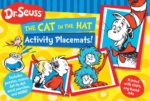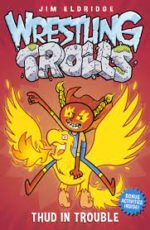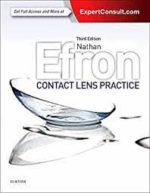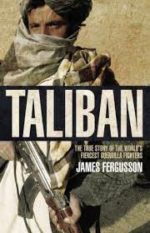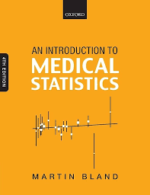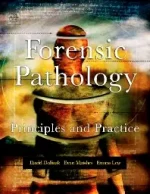-
121 Grandpa Stories
KShs 895.00121 Grandpa Stories have 121 stories for children which include moral stories, stories that portray good character and stories that are short and good for a read.
-
Dr. Seuss The Cat in the Hat Activity Placemats!: Includes puzzles, mazes, dot-to-dot, word searches, and more! Paperback
KShs 795.00Keep your child engaged and entertained wherever you may go, thanks to the magic of Dr. Seuss. Iconic characters and favorite rhymes that accompany on-the-go activities, such as coloring, mazes, puzzles, and more. Bring out the book at home for a special treat, or use it to keep kids from getting bored while traveling or running errands!
Make mealtime fun with Dr. Seuss The Cat in the Hat Activity Placemats! Featuring puzzles, games, and coloring activities kids will love
-
Thud in Trouble (4) (Wrestling Trolls)
KShs 650.00Jack, Milo, Robin, and Big Rock are back, and they have a new friend with them too—Blaze, the magical phoenix. As usual, the gang is low on money, so they plan to come together as a family and make some cash by taking on notorious bully Buster Gutt. Unfortunately, Buster is even meaner than they thought. In the second story, villainous Lord Veto tries to break up the Waldo’s Wrestling Trolls family. He plants seeds of doubt in Jack, which sets Milo off, and soon Princess Ava is caught in the middle of two very grumpy boys.
-
Contact Lens Practice
KShs 29,400.00In this thoroughly revised and updated third edition of Contact Lens Practice, award-winning author, researcher and lecturer, Professor Nathan Efron, provides a comprehensive, evidence-based overview of the scientific foundation and clinical applications of contact lens fitting. The text has been refreshed by the inclusion of ten new authors – a mixture of scientists and clinicians, all of whom are at the cutting edge of their specialty. The chapters are highly illustrated in full colour and subject matter is presented in a clear and logical format to allow the reader to quickly hone in the desired information.
-
Frenemies Forever (Dork Diaries
KShs 1,295.00Nikki Maxwell, Queen of the Dorks, is back in the eleventh installment of the bestselling series! Nikki is spending a week at North Hampton Hills as part of the school transfer programe. The good news is that NHH is super-cool and preppy. The bad news is that Nikki’s nemesis MacKenzie started there two weeks ago! But, faced with NHH queen bee Tiffany, who takes meanness to a whole new level, Nikki might need to work WITH Mackenzie if she’s going to survive the week! Can Nikki and MacKenzie overcome their differences and become BFFS …Best Frenemies Forever?!
Target age group 9-12 -
Taliban: The True Story of the World’s Most Feared Guerrilla Fighters
KShs 2,200.00Fifteen years ago, southern Afghanistan was in even greater chaos than it is now. The Russians, who had occupied the country throughout the 1980s, were long gone. The disparate ethnic and religious leaders who had united to eject the invaders – the famous mujaheddin – were at each others’ throats. For the rural poor of Kandahar province, life was almost impossible. On 12 October 1994 a small group of religious students decided to take matters into their own hands. Led by an illiterate village mullah with one eye, some 200 of them surrounded and took Spin Boldak, a trucking stop on the border with Pakistan. From this short and unremarkable border skirmish, a legend was born. The students’ numbers swelled as news of their triumph spread. The Taliban, as they now called themselves – taliban is the plural of talib, literally ‘one who seeks knowledge’ – had a simple mission statement: the disarmament of the population, and the establishment of a theocracy based on Sharia law. They fought wi
-
An Introduction to Medical Statistics 4th Revised ed. Edition
KShs 6,860.00Now in its Third Edition, An Introduction to Medical Statistics contin ues to be and invaluable textbook for medical students, doctors, medic al researchers, nurses, members of professionals allied to medicine as well as those concerned with medical data. The material covered inclu des all the statistical work that would be required for a course in me dicine and for the examinations of most of the Royal Colleges. It incl udes the design of clinical trials and epidemiological studies, data c ollection, summarizing and presenting data, probability, standard erro r, confidence intervals and significance tests, techniques of data ana lusis including multifactorial methods and the choice of statistical m ethod, problems of medical measurement and diagnosis, vital statistics, and calculation of sample size.
-
LV3 Little Red Riding Hood
KShs 495.00Give your child the best head start with reading. Have fun learning first sounds and words together, using the traditional story of Little Red Riding Hood. Phonics is the method of learning to read that most teachers use. Children learn the sounds made by letters, or group of letters, then they blend them together to make words. With 75 stickers and lots of story-based activities children will love learning to read with this educational and engaging phonics book. This paperback book has 32 pages and measures: 28 x 21 x 0.4cm
-
Introduction to Epidemiology-8th edition by Author(s)Ray M. Merrill
KShs 4,820.00Introduction to Epidemiology
Recognized by Book Authority as one of the best Public Health books of all time, Introduction to Epidemiology is a comprehensive, reader-friendly introduction to this exciting field. Designed for students with minimal training in the biomedical sciences and statistics, this full-color text emphasizes the application of the basic principles of epidemiology according to person, place, and time factors in order to solve current, often unexpected, and serious public health problems. Students will learn how to identify and describe public health problems, formulate research hypotheses, select appropriate research study designs, manage and analyze epidemiologic data, interpret results, and apply results in preventing and controlling disease and health-related events. Offering real-world examples in the form of case studies and news files in each chapter, Introduction to Epidemiology is an accessible and effective approach to learning epidemiology.
-
Forensic Pathology Principles and Practice
KShs 60,000.00Forensic Pathology is a comprehensive reference that uses a case-oriented format to address, explain and guide the reader through the varied topics encountered by forensic pathologists. Developed in response to a severe void in the literature, the book addresses topics ranging from medicolegal investigation of death to death scene investigation, forensic autopsy, and artifacts of resuscitation as well as complications of medical therapy, forensic osteology, forensic odontology, forensic photography, and death certification. The book includes various types of cases, including sudden natural death, asphyxia, motor vehicle collisions, death in custody, child abuse and elder abuse, acute psychiatric and emotional deaths, and pregnancy. It contains sample descriptions of pathological lesions which serve to aid pathologists in reporting their findings to law enforcement agencies, attorneys, and others involved in investigations of sudden death. The concepts outlined in the text are beautifully illustrated by large, colorful photographs. There are also “Do and Don’t” sections at the end of each chapter that provide guidance for handling the types of cases examined. This work will benefit not only experienced forensic pathologists, but also hospital pathologists who occasionally performs medicolegal autopsies; doctors in training; medical examiners; law enforcement personnel; crime scene investigators; attorneys; and fellows and students of the medical sciences.


